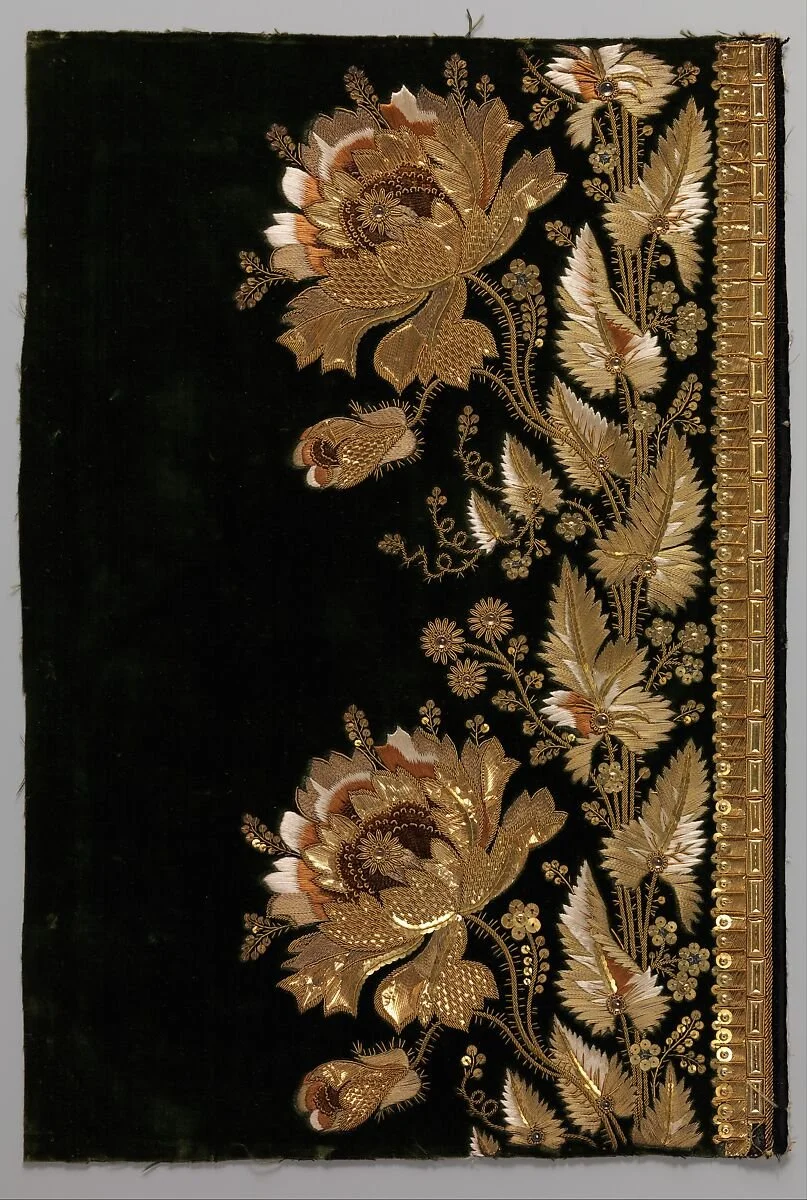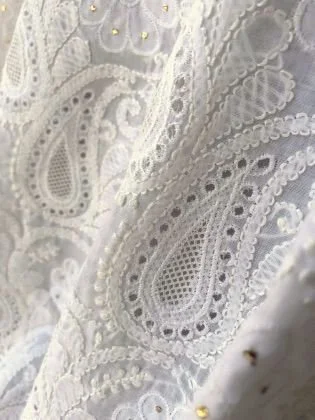A LOVE OF EMBROIDERY
A place to explore the traditional, fine craft techniques we use and reference when dreaming up our creations.
ZARDOZI
Zardozi, an intricate and opulent form of embroidery, holds a rich historical legacy tracing back to ancient Persia around 3,000 years ago. The term "Zardozi" originates from Persian words—'zar' meaning gold and 'dosi' referring to embroidery. Initially employed to embellish royal garments, Zardozi gained prominence during the Mughal era in India, flourishing under royal patronage. Skilled artisans meticulously sewed metallic threads, predominantly gold and silver, along with precious stones, beads, and sequins onto fabrics, creating stunning designs that exuded luxury and grandeur. Over time, Zardozi evolved and diversified, becoming an integral part of traditional attire, especially bridal wear, across South Asia and the Middle East, embodying exquisite craftsmanship and cultural heritage.
Images sourced via pinterest
AARI
Aari embroidery, also known as 'crewel' or 'hook' embroidery, has a storied history rooted in the rich textile traditions of Kashmir, India. Its origins date back centuries, with artisans employing a specialized hooked needle, known as the 'aari' or 'crewel' needle, to create intricate and elaborate designs on fabrics like wool, silk, and cotton. This embroidery form gained prominence during the Mughal era, where it adorned royal garments and shawls, showcasing fine craftsmanship and attention to detail. Aari embroidery involves a unique technique where the artisan uses a hooked needle to create chain stitches, often incorporating motifs inspired by nature, flowers, vines, and paisleys. Over time, Aari embroidery expanded its reach beyond Kashmir, becoming a celebrated art form recognized for its elegance and beauty in traditional clothing and home decor across various regions of India and globally.
Images sourced via pinterest/Met/V&A
gota
Gota, a decorative element in Indian textile crafts, traces its origins to the state of Rajasthan and has been an integral part of traditional Indian attire for centuries. Made from strips of metallic ribbon or lace, usually gold or silver in color, Gota is meticulously handcrafted and often combined with vibrant fabrics like silk or chiffon to create stunning designs. Artisans skillfully stitch or weave the Gota onto fabrics, forming intricate patterns, motifs, and borders, adding a touch of opulence and richness to garments like sarees, lehengas, and dupattas. Initially used in Rajasthani attire, Gota has transcended regional boundaries and become popular in various parts of India, adorning both traditional and contemporary clothing, celebrating the artistry and cultural heritage of Indian craftsmanship.
Images sourced via pinterest
mirror work
Mirror embroidery, also known as Shisha embroidery, has a vibrant history originating from Central Asia and spreading across various cultures, particularly prevalent in regions like India, Pakistan, and Afghanistan. This exquisite form of embellishment involves the use of small reflective mirrors, typically circular in shape, which are intricately stitched onto fabrics using colorful threads. The mirrors, traditionally made from mica or glass, are surrounded by decorative embroidery, forming geometric patterns, floral motifs, or intricate designs. Mirror work is often seen adorning traditional garments, accessories, and home decor items, adding a dazzling and captivating element to the fabric. This craft not only reflects cultural heritage but also embodies the artistry and creativity of skilled artisans, enchanting admirers with its shimmering beauty and intricate detailing.
Images sourced via pinterest
Chikankari
Chikankari, a delicate and timeless form of embroidery, originated in the heart of India, in the city of Lucknow in Uttar Pradesh. This exquisite craft dates back to the Mughal era, where it was patronized by the emperors and nobility. Chikankari involves intricate hand embroidery, primarily done with white thread on fine muslin or other lightweight fabrics like cotton or silk. The artisan skillfully creates various stitches, including the shadow, stem, and chain stitches, to form elegant motifs such as flowers, paisleys, and vines. Known for its intricate patterns and sheer elegance, Chikankari work adds a touch of sophistication and grace to traditional Indian garments like sarees, salwar suits, and dupattas. This art form has transcended time, preserved its allure and continues to be cherished both in India and across the globe for its timeless beauty and craftsmanship.
Images sourced via pinterest










